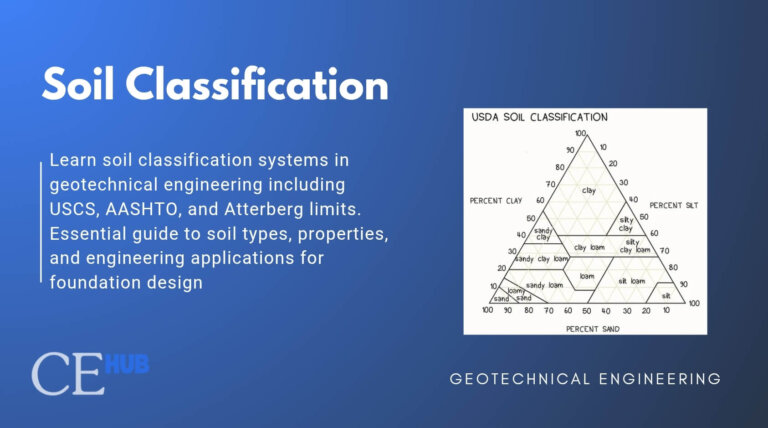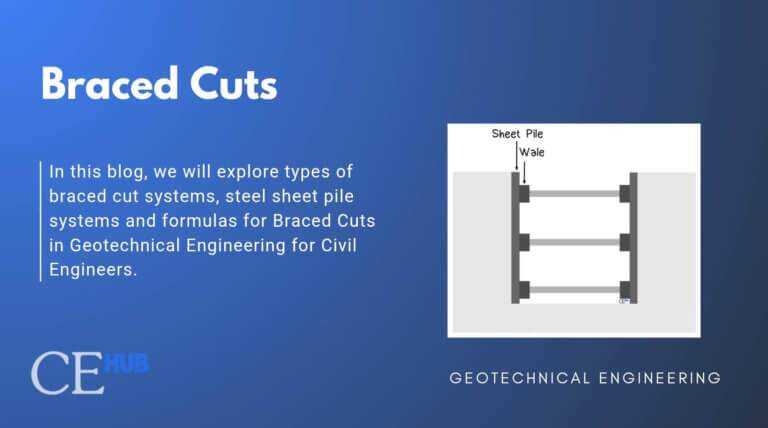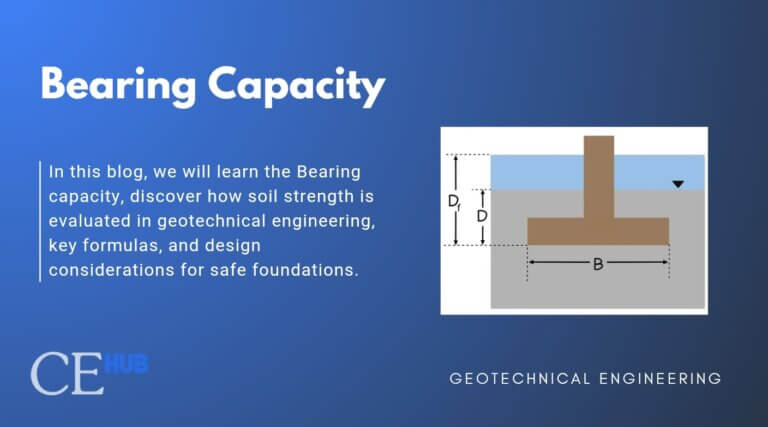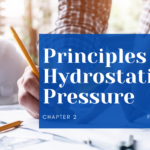Compressibily of Soil
What you’ll learn
What is Compressibility of Soil in Geotechnical Engineering?
Soil Compressibility is the ability of soil to decrease in volume when subjected to increased loading. It directly controls settlement behaviour and is fundamental for foundation design, determining how much and how fast structure will settle.
What are the causes of compression?
- Compaction – is the instantaneous process of reducing the volume voids due to expulsion of pore air. In simple term, removing the air.
- Consolidation – is a time dependent process of reducing the volume voids due to expulsion of pore water and plastic readjustment of soil solids. In simple term, removing the water.
What are the three types of Soil Settlement?
Soil Settlement are divided into three (3) distinct phases:
1. Immediate Settlement
Immediate settlement occurs instantly upon loading due to elastic deformation of soil, without any change in moisture content.
2. Primary Consolidation
Primary Consolidation Settlement is a time-dependent settlement caused by a volume change in saturated cohesive soils due to expulsion of water that occupies the void spaces.
3. Secondary Consolidation
Secondary Consolidation Settlement is a long-term settlement caused by plastic readjustment of soil fabrics, it is an additional form of compression that occurs at constant effective stress.
Settlement
is defined as the deformation of soil due to vertical stress.
Total Settlement
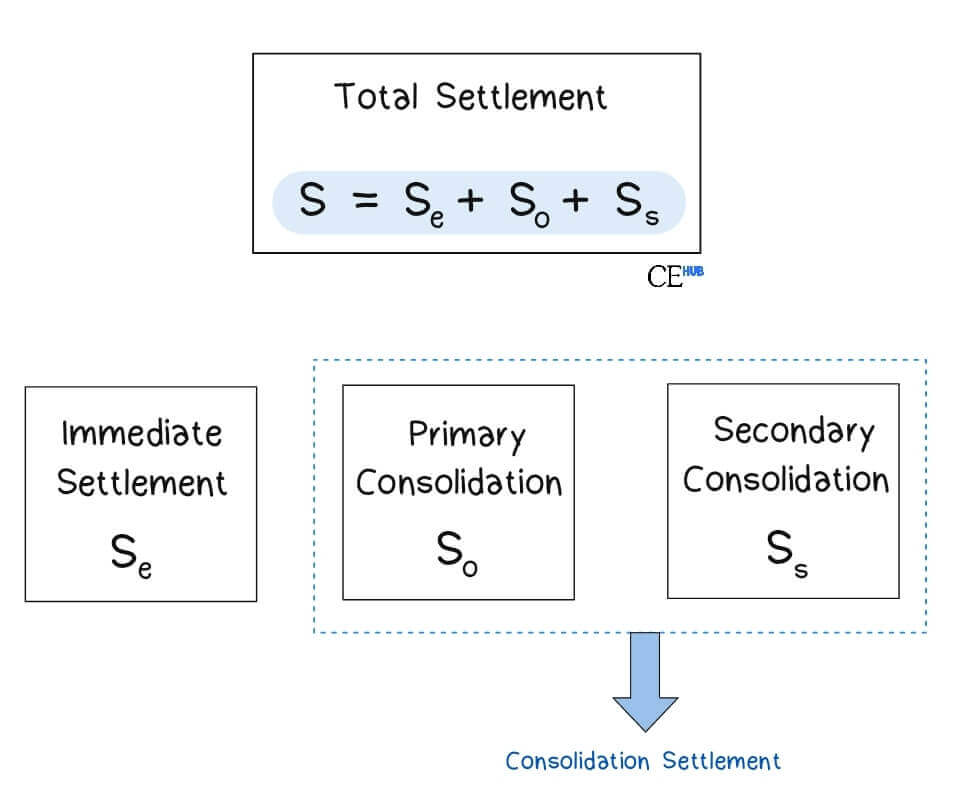
Primary Consolidation Settlement
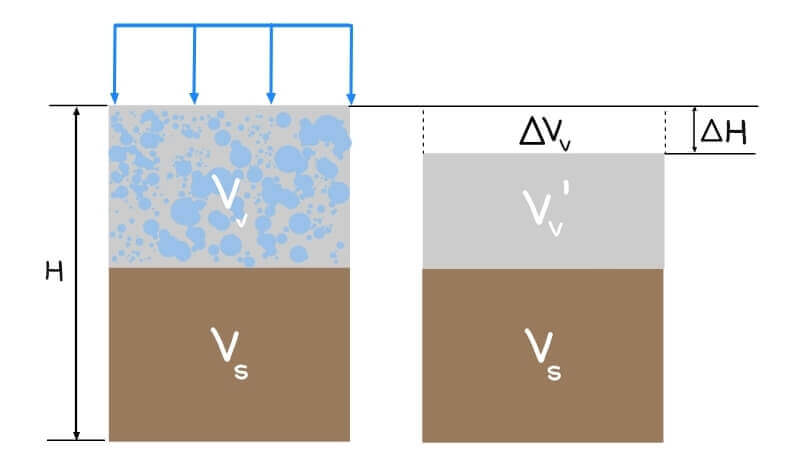
How did we get the formula?
Based from the image,
deriving based from void ratio, we can get:
![]()
where: ![]() = thickness of stratum
= thickness of stratum ![]() = void ratio before the vertical load is applied
= void ratio before the vertical load is applied![]() = void ratio after the vertical load is applied
= void ratio after the vertical load is applied
Normally Consolidated
![]()
Overconsolidated Clay
Case 1: ![]()
![]()
Case 2: ![]()
![]()
Where:![]() =thickness of clay
=thickness of clay ![]() = initial void ratio
= initial void ratio![]() = compression index
= compression index![]() = swell index
= swell index![]() =pre-consolidation pressure
=pre-consolidation pressure ![]() = surcharge
= surcharge ![]() = initial vertical effective stress
= initial vertical effective stress
Compression Index (Skempton)
For Remodeled Clay
![]()
For Disturbed Clay
![]()
Swell Index
![]()
Secondary Consolidation Settlement
![]()
![]()
where: ![]() = secondary compression index
= secondary compression index ![]() = change in void
= change in void ![]() = void ratio after primary
= void ratio after primary ![]() = thickness of clay layer
= thickness of clay layer
Immediate Consolidation Settlement
![]()
where: ![]() = applied net pressure
= applied net pressure ![]() = width or diameter of foundation
= width or diameter of foundation![]() = Poisson’s Ratio
= Poisson’s Ratio![]() =modulus of elasticity of the soil
=modulus of elasticity of the soil![]() = influence factor
= influence factor
Interpretation of Test Results
1: Time – Deformation of Curve
 = Coefficient of Consolidation
= Coefficient of Consolidation
2: Pressure – Deformation of Curve
 = Compression Index
= Compression Index = Recompression Index
= Recompression Index = Coefficient of Compressibility
= Coefficient of Compressibility = Coefficient of Volume Compressibility
= Coefficient of Volume Compressibility
Degree of Consolidation
The ratio of the amount of consolidation at a given time within a soil mass, to the total amount of consolidation obtainable under a given stress condition.
![]()
or
![]()
where:![]() = excess pore pressure at time
= excess pore pressure at time ![]() = initial excess pore water pressure
= initial excess pore water pressure ![]() = settlement of the layer at time
= settlement of the layer at time ![]() = ultimate settlement of the layer from primary consolidation
= ultimate settlement of the layer from primary consolidation
Time Rate of Consolidation
How do you determine Time Rate of Consolidation?
Time Rate of Consolidation is governed by the Coefficient of Consolidation (Cv) and drainage path length, and how fast the settlement occurs.
Coefficient of Compressibility
is the slope of the void ratio-pressure curve when both are plotted on an arithmetic scale.
![]()
where: ![]() = difference in void
= difference in void ![]() = rise in pressure
= rise in pressure
Coefficient of Volume Compressibility
is the volume decrease of a unit volume of soil per unit increase of effective pressure during compression.
![]()
where: ![]()
Coefficient of Consolidation
is the parameter used to describe the rate at which saturated clay or other soil undergoes consolidation, or compaction, when subjected to an increase pressure.
![]()
Time Factor
is the parameter used to find the consolidation coefficient with time taken for consolidation settlement in soil.
![]()
where:![]() = time corresponding to the degree of
= time corresponding to the degree of ![]() = thickness of the soil sample
= thickness of the soil sample![]() = degree of consolidation in %
= degree of consolidation in %
Consolidation Settlement under a Foundation
![]()
where:![]() = increase in pressure at the top layer
= increase in pressure at the top layer![]() = increase in pressure at the middle
= increase in pressure at the middle![]() = increase in pressure at the bottom
= increase in pressure at the bottom
References:
Holtz, R. D., & Kovacs, W. D. (1981). An introduction to geotechnical engineering. Prentice Hall.
Das, B. M. (2013). Fundamentals of geotechnical engineering. Cengage Learning
Frequently Asked Questions (FAQs)
What is immediate settlement and when does it occur?
From the root word “immediate”, it occurs immediately upon load application due to elastic deformation of soil skeleton without volume change.
What is the difference between compaction and consolidation?
They are both compressing the soil however in compaction we’re removing the air while in consolidation we’re removing the water.

